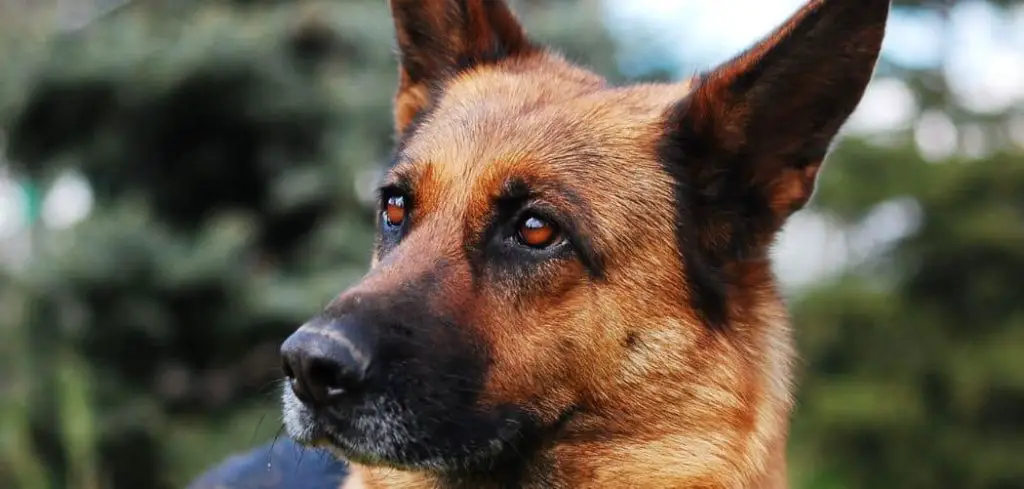Seeing dog poop like jelly with blood combined with vomiting is alarming for any pet owner.
These symptoms can point to serious underlying issues ranging from infections to gastrointestinal problems that require urgent care.
We outline the common causes of a dog pooping jelly-like stool with blood and vomiting, what you can do at home, and when to seek veterinary help.
Table of Contents
Dog Poop Like Jelly With Blood and Vomiting — Why It Happens
When a dog passes stool that looks like jelly with blood and is also vomiting, it often signals inflammation or damage in the digestive tract. Infections, parasites, dietary issues, or conditions such as hemorrhagic gastroenteritis can all trigger this concerning combination. The jelly-like texture is usually mucus, which forms in response to irritation in the intestines.
Vomiting alongside bloody, mucusy stool suggests the problem may be affecting both the stomach and intestines at the same time. These are not symptoms to ignore, as they can worsen quickly.

Dog Poop Like Jelly With Blood and Vomiting: Common Causes
Hemorrhagic Gastroenteritis (HGE)
Hemorrhagic gastroenteritis is one of the most common causes of sudden jelly-like bloody stool in dogs accompanied by vomiting.
The stool often appears bright red with mucus, almost like raspberry jelly. The exact cause is unclear, but it may be linked to bacterial toxins, dietary changes, or stress.
Dogs with HGE often become lethargic, dehydrated, and refuse food. The condition can be life-threatening if left untreated because it leads to severe fluid loss and shock.
Immediate veterinary treatment with fluids and supportive care is essential.
Read more: Dog Poop Like Jelly With Blood and Mucus (When to worry)
Parvovirus
Parvovirus is a highly contagious and dangerous viral infection, particularly in puppies or unvaccinated dogs.
It causes severe inflammation of the intestines, leading to bloody, jelly-like diarrhea and persistent vomiting.
Affected dogs may also show weakness, loss of appetite, fever, and rapid dehydration. Because parvovirus attacks the immune system and gut lining, it progresses quickly and requires aggressive veterinary intervention. Without treatment, it is often fatal.
Parasites
Intestinal parasites such as whipworms, hookworms, or Giardia can irritate the intestinal lining, leading to mucus-covered, bloody stool.
Vomiting may occur if the infestation is heavy or if the parasites spread into the stomach.
These infections can develop slowly, with dogs showing gradual weight loss, poor coat condition, and intermittent diarrhea before suddenly worsening. Puppies and weakened dogs are most vulnerable, and untreated infestations can cause anemia or severe malnutrition.
Dietary Indiscretion
Dogs that eat spoiled food, garbage, or non-food items often develop gastrointestinal upset.
Sharp objects or toxins can damage the gut lining, causing bloody, jelly-like diarrhea. Vomiting is common as the body tries to expel the irritant.
While mild cases may pass with rest and hydration, ingestion of toxic substances, bones, or foreign objects can cause blockages or poisoning. In these cases, bloody stool and vomiting can rapidly escalate to a medical emergency.
Colitis
Colitis, or inflammation of the colon, can cause stools coated in mucus and streaked with blood.
It often appears suddenly and may be triggered by stress, infection, or dietary changes. Dogs with colitis may strain to defecate, producing small amounts of jelly-like stool.
Vomiting may occur alongside diarrhea, especially if the inflammation extends further up the gastrointestinal tract. While some cases resolve with dietary management, chronic or severe cases require veterinary treatment.
Inflammatory Bowel Disease (IBD)
IBD is a long-term condition where the immune system attacks the lining of the digestive tract, causing persistent irritation. Dogs with IBD may pass bloody, mucusy stools and vomit frequently.
This condition often develops gradually, with signs like weight loss, poor appetite, and recurrent digestive upset. Left untreated, it can severely impact a dog’s quality of life, requiring ongoing veterinary care and dietary adjustments.
What to Do If Your Dog Is Passing Poop Like Jelly With Blood and Vomiting
If your dog has these symptoms, the first step is to withhold food for 12–24 hours while ensuring they have access to clean water.
This allows the digestive system time to rest. However, water intake should be monitored closely to prevent dehydration.
Offering small amounts of a bland diet, such as boiled chicken and rice, may help once vomiting has stopped. Keeping your dog calm and indoors also prevents additional stress on their system.
Over-the-counter probiotics designed for dogs may support gut recovery, but these should never replace veterinary treatment if symptoms persist. If your dog worsens or shows other concerning signs, home care alone will not be enough.
When to Call or Visit Your Vet
Any dog showing jelly-like bloody stool and vomiting should be evaluated by a veterinarian, especially if the symptoms are sudden or severe. Immediate care is needed if your dog is lethargic, refusing food or water, or showing signs of dehydration such as dry gums or sunken eyes.
Persistent vomiting, black or tarry stool, or signs of abdominal pain also warrant urgent attention. Puppies, older dogs, or those with existing health issues are at higher risk and should be seen without delay.
Because conditions like parvovirus or hemorrhagic gastroenteritis can progress rapidly, timely veterinary care can be lifesaving.
Read more: Dog poop like jelly with blood and not eating (What it could mean)
Key Takeaway
Dog poop that looks like jelly with blood combined with vomiting is a serious warning sign that should never be ignored.
While mild digestive upsets can sometimes be managed at home, these particular symptoms often signal infections or conditions that require veterinary care.
Early intervention not only prevents complications but also gives your dog the best chance at recovery. If in doubt, contacting your veterinarian promptly is always the safest choice.
